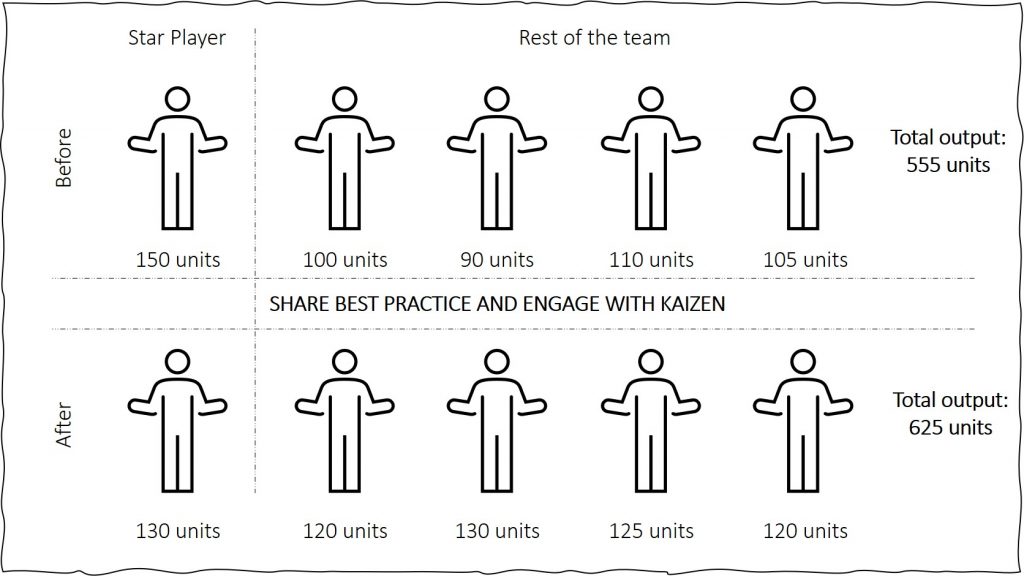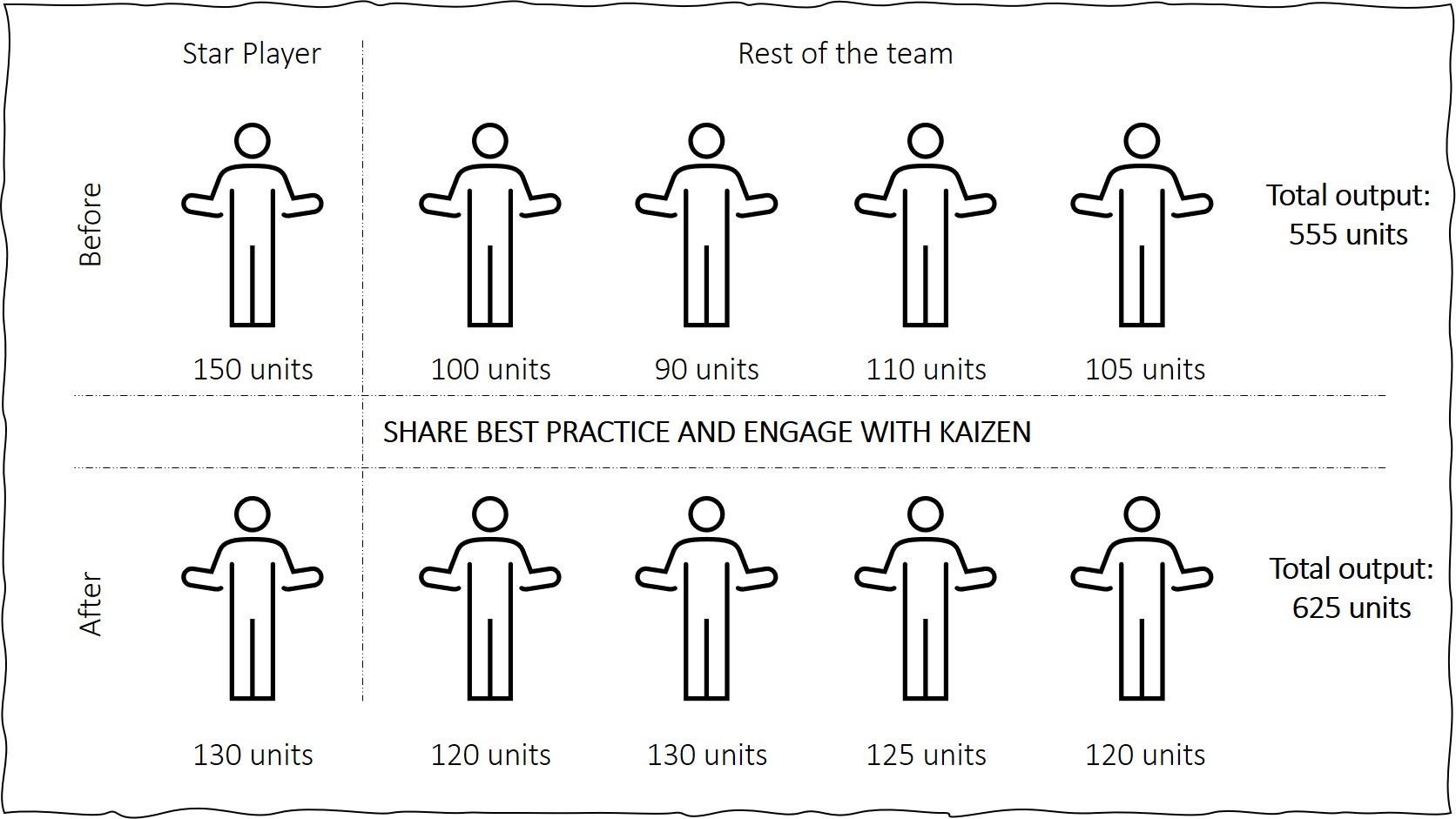Building the team is one of the challenges of running a business process. Stopping to make things better is a double edged sword. If you aren’t abundant with resources you risk not delivering for your customer if you direct people onto improvement tasks. But, if you do stop you have the opportunity to improve the results you achieve going forward. With everything that goes on in a working day this is not an unusual dilemma for most managers. But, what would happen if each member of your team increased their performance by 10%? What would this mean in terms of the results you could collectively achieve?
There are a couple of improvement methods that we can use to achieve this and they both involve building the team so that they become more effective and more efficient whilst delivering better results.
Option One – utilising the ‘star player’
There is often a ‘star player’ within each team, someone that is naturally more productive and effective than the other team mates. This is life and you’re lucky if you have more than a couple of star players.
The hypothesis is that this productive individual knows something, or has a more effective approach, than their colleagues. Unless it is some kind of natural talent this means that you should be able to find out what their secret is and share it with the rest of the group.
Even if you lose a little bit of time from your star player you will be able to find the overall gains in the team are worth it. Obviously, the larger the team the more amplified the effect. At some of my clients we have completely removed the star player from operational duties to focus on building the team and their methods. The effects on productivity, profitability and customer satisfaction have been tremendous.
Note – if they don’t want to share their ‘magic sauce’ with the rest of the group that means that either you need to be firm with them and give them a ‘reasonable management request’ or decipher it yourself.
Once you start to share this idea / approach with the rest of the group you should be able to measure the impact. This really is a great way to ensure you are building the team.
After you have proven the new method, don’t forget to document it and make it the new standard!

Two – Kaizen
If you don’t particularly have a stand out best player on the team, or don’t want to take that approach then you can adopt the Kaizen approach.
If you want an approach that really does help you with your goal of building the team then you can’t go wrong with this method.
Kaizen is much more than just a Japanese word for continuous improvement. Using this approach correctly will allow you to use small improvement steps to build confidence in your team as well as outstanding performance improvements. It can require some careful leadership but is a low cost and powerful approach. If this is a new approach for you and you would like some practical implementation steps then refer to my Kaizen Checklist to adopt this method without the pitfalls.
When you use Kaizen you are doing more than just building the team. This is not just about developing the skills of your staff for the sake of developing skills. This is all about improving the way that your team works. One of the best ways to do this is to list out all of the concerns you have about your business processes and use those concerns as the focus for improvement.
The full approach is called ‘Concern – Cause – Countermeasure’. The three steps therefore are:
- Capture all of the concerns you have about your processes (what doesn’t work, what’s not quite right).
- Determine what is causing the concern. Digging here is invaluable as getting to an ‘aha’ moment means that you can solve this issue once and for all.
- Define an appropriate countermeasure to correct the concern.
It is the third point (countermeasure) that you apply your Kaizen approach to most easily. Break down the improvement action into the first few tiny steps and let your team nibble their way forward.
With each nibble they could learn something about what works (and what doesn’t). They could also learn how to become more effective at implementing change. With each step they take they can become more effective at embracing change as well as helping you to lift the overall team performance.
Putting this together
If you can jump start your improvement activities by finding the best current methods and then tackling the ongoing concerns, you should find that you have a potent method for building the team and achieving results.
Learning as a group takes the sting out of the process of change, especially if you are also involved in the process (as a learner). Using the PDCA (Plan Do Check Act) cycle to help you learn from your successes and mistakes is a good framework to use. If in doubt, stop often and check how things are going. Too often managers check at the end of a change when it is too late to do anything and then write off the process of change(!).
Make your new working practices the new normal and then progress from there.
Building the team can have benefits wider than just the team itself and using the two approaches outlined in this article could really help your business to develop and progress at a rate faster than you could ever imagine.
